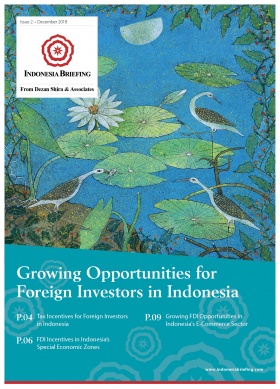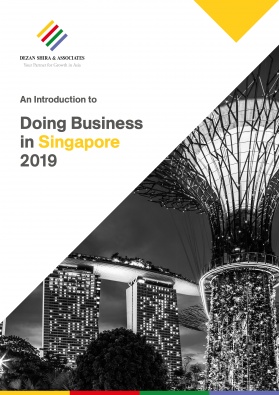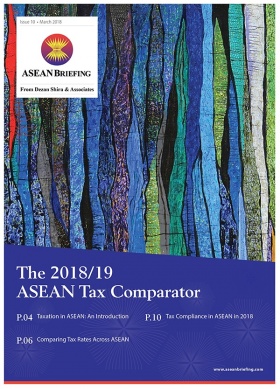Indonesia’s New Tax Incentives: What it Means for Investors
In June 2019, the Indonesian government issued GR 45/2019, which sets out a series of tax incentives for businesses that invest in labor intensive industries, training programs, as well as research and development (R&D).
GR 45/2019 also amends GR 94/2010 to expand the criteria for taxpayers eligible to receive tax incentives irrespective of industry. Under GR 94/2010, those eligible for tax facilities were those that had invested in pioneer industries.
Taken together, the incentives are designed to encourage more foreign direct investment (FDI), expand the skilled labor base, and develop industry.
Investment in labor-intensive industries
Taxpayers that invest or expand into labor-intensive or pioneer industries can enjoy a net income reduction of 60 percent of their total investment in the form of tangible fixed assets, which
includes any land used for the main business activities over a certain period.
The Ministry of Industry defines a labor-intensive industry as one that employs a minimum of 200 workers with labor costs not exceeding 15 percent of production costs, while the Ministry of Finance defines a pioneer industry as one that provides value-added economic consequences to surrounding areas.
To attain this tax facility, the taxpayer must not obtain any other tax allowance facilities under Article 31A of the Income Tax Law.
Still, investors will need to wait for upcoming Ministry of Finance regulations that are expected to explain the duration of the facility period and more details on the specific industries that are eligible for the tax incentive.Foreign investors can take advantage of this new incentive – along with the country’s manufacturing base, competitive labor costs, and large consumer market – to establish bases in Indonesia for key sectors, such as textiles and garments, commodities, as well as services.
Greater FDI into labor-intensive industries will generate employment and help improve the existing infrastructure and business ecosystem – companies that invest now will also benefit from a first mover advantage.
Apprenticeships and training activities
Investors looking to start apprenticeship programs or training activities to develop workers based on ‘certain competencies’ can receive a gross income reduction of up to 200 percent of the total costs incurred. The regulation defines ‘certain competencies’ as developing human resources that can meet the labor requirements needed by national industries and businesses.
This incentive will be particularly advantageous for foreign companies that need to develop a skilled labor pool or improve the efficiency of their operations. Meanwhile, companies already based in the country who undertake regular training of its workers, especially those in high-end manufacturing, such as automotive production and electronics, will benefit.
This incentive will likely increase demand for vocational training, which offers further downstream opportunities for investors. Language courses for instance, are in high demand as students and professionals are eager to equip themselves with the language skills needed to compete in today’s global economy.Furthermore, the fields of hospitality and IT are also becoming increasingly popular as many secondary schools do not have the capabilities to prepare students for the job market. The country is also in dire need of quality teachers, another opportunity for foreign investment in vocational education.
R&D activities
Taxpayers that engage in R&D initiatives can receive a tax facility of 300 percent in gross income reduction of total costs incurred. To avail of this facility, the taxpayer must be conducting R&D that is assessed by the government to be advancing the national economy, new industries and technologies, or transfer of foreign technology to local businesses.
It is still unclear whether the 300 percent tax reduction is applicable for the first year only or for every year and investors will have to wait for the upcoming Ministry of Finance regulation for further details.
This incentive is designed to encouraging more companies to generate innovation and shift to more high technology industries and products, whether it be developing specialized fabric finishes or new farming cultivation methods. This type of innovation is a necessity for expanding industries.
Indonesia is currently behind its neighbors in the field of R&D. According to UNESCO, Indonesian companies only conducted some half a million dollars worth of R&D compared to that of Malaysian and Singaporean companies, which conducted US$4 billion and US$6 billion, respectively.However, Indonesia has plenty to contribute to the world of science, technology, and academia. Its position on the Asia Pacific ring of fire presents unique opportunities for foreign education partners in niche subjects, such as herbal medicine, in addition to marine science, renewable energy, and horticulture technology — Indonesia is the world’s largest exporter of crude palm oil— among many others.
Indonesia as an investment destination
This regulation could hamper short-term tax revenue growth. Meanwhile, other measures, such as good governance, infrastructure development, and the streamlining of business licence procedures need to also be implemented to fully harness the impact of these tax incentives.
These challenges are evident in the country’s ranking of 134 out of 190 countries in the Starting a Business indicator in 2019, despite its rise in Ease of Doing Business ranking from 91 to 73 in 2018.
But GR45/2019 shows some ambition.
Despite China’s position as the leading manufacturer of goods in the world, its evolving economy, increasing labor costs, as well as the ongoing trade war with the US, has caused manufacturers to move their operations, or partly, to markets in Southeast Asia, such as Indonesia.
This ‘China plus one’ approach allows foreign businesses in China to diversify their manufacturing strategies and protect themselves against a wide-range of risks. And Indonesia has emerged as a strong investment destination for businesses using this strategy as a result of its established manufacturing base and comparatively low operating costs.However, challenges remain if Indonesia would like to take full advantage of the changing trade and investment environment in Asia.
While the country is developing its knowledge-based economy, and moving up the value-added chain, its growing industries find a shortage of skilled labor, in addition to technology and infrastructure challenges.
Policies like GR45/2019 will aim to attract significant foreign and domestic private investment to solve these issues and raise the country’s competitiveness on the global stage.
About Us
ASEAN Briefing is produced by Dezan Shira & Associates. The firm assists foreign investors throughout Asia and maintains offices throughout ASEAN, including in Singapore, Hanoi, Ho Chi Minh City and Jakarta. Please contact us at asia@dezshira.com or visit our website at www.dezshira.com.







